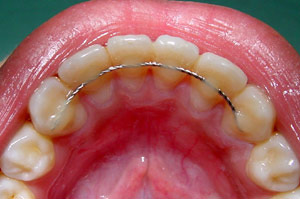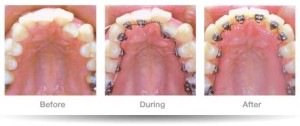Did you have orthodontic treatment as a teen, but find years down the track your teeth have reverted back to crookedness? Many patients who have had braces, retainers or other appliances find that later in life their teeth relapse into their original alignment. This can be caused by a number of factors, particularly not wearing a prescribed retainer, and sometimes the age at which treatment was completed.
If you had orthodontic treatment as a child and your teeth have become crooked again over time, you may be thinking “I don’t want to go through braces again!” which is perfectly understandable. At Vivid Dental, we are proud to provide options that make straightening your smile easier, more comfortable and less visible. 
Usually after orthodontic treatment, a clear plastic retainer is issued to be worn either during the day or at night in order to keep teeth in place. Sometimes, a thin wire is used to reinforce teeth after orthodontic treatment, as a fixed retainer so you don’t need to remember to take it in and out. This is easy and convenient and great for keeping teeth in the correct alignment, however it makes flossing and cleaning teeth very difficult.
Traditional braces for adults can be daunting, uncomfortable and slightly awkward. That’s why we like to offer our patients other options to straighten their teeth, without the bulky appearance of traditional braces. Invisalign is a system of orthodontic treatment that uses a series of clear retainers to gradually align your teeth. This way you can straighten your smile without the appearance of braces, and still floss, brush and have professional cleans as normal.
If you are concerned about your teeth relapsing after orthodontic treatment, book in a consultation with us. We can discuss your options, review your condition and prescribe the best orthodontic treatment for you. Don’t waste those years of orthodontic treatment – enjoy a straight smile!


Thank you for this very informative blog post! As the teeth are pushed out of their positions, they can cause pain, discomfort, and difficulty with eating. This is where orthodontic treatment comes in. The process of straightening the teeth or moving them into a better alignment is known as orthodontics.
The first step towards orthodontic treatment is an exam to determine if one is even a candidate for this type of procedure. This usually includes x-rays and photographs of the teeth as well as measurements of their positions. Depending on the severity of the problem, there are many different types of solutions that can be recommended for someone with malocclusion or misaligned teeth. These include braces, elastics bands, headgear devices to pull on the lower jaw forward or other types that are inserted into brackets that are attached to the teeth.